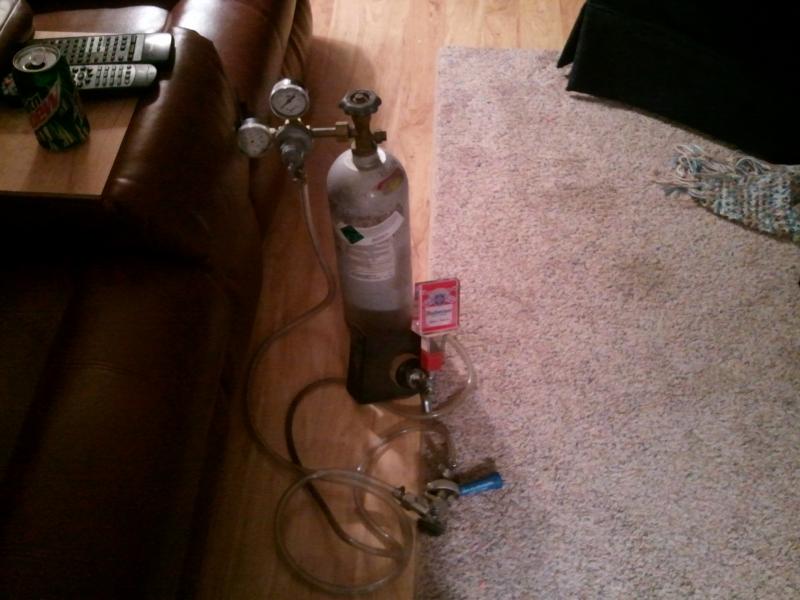Welcome my friend

The tap (keg coupler) that you have is for a commercial keg, and it will not work on corney kegs. What you need are corney keg quick disconnects (or soda keg quick disconnects, they are the same thing) to use them with cornies. Cornies have 2 different styles; ball lock and pin lock. Ball lock kegs are what Pepsi uses, and pin lock is what Coke uses. They do use different styles of disconnects. No matter which type of keg you have, you will need 2 disconnects; a gas (usually gray in color, gray for gas), and a liquid disconnect (usually black in color, black for beer).
Here is a ball lock disconnect for the beer-out:
http://www.midwestsupplies.com/kegging/ball-lock-liquid-fitting-1-4-barbed.html
And here's a ball lock for gas:
http://www.midwestsupplies.com/kegging/ball-lock-gas-disconnect-1-4-barbed.html
Here's a pin lock beer-out disconnect:
http://www.midwestsupplies.com/pin-lock-liquid-fitting-barbed.html
And here is a pin lock gas disconnect:
http://www.midwestsupplies.com/pin-lock-gas-fitting-barbed.html
Although you don't necessarily need one, I would recommend a refrigerator that can fit the kegs

The quality of the beer flow can vary greatly with the amount of CO2 the beer is carbonated to, the temperature of the beer, and the line length of the beer serving line.
Typically, the serving line is around 6-10 feet of 3/16 inch inside-diameter tubing. This small tubing combined with the length provides resistance to prevent the beer from shooting out of the faucet and foaming up everywhere.
Carbonation levels can be referenced here:
http://www.kegerators.com/carbonation-table.php. As you can see here, the amount of carbonation in a liquid is related to the amount of CO2 pressure and the temperature of the beer. Typically, beers are carbonated to around 2.5 volumes of CO2. So if you want to achieve this, and your refrigerator is 38 degrees, you would need a CO2 pressure of around 11-12 PSI.
There are a couple different ways to carbonate a keg to achieve the CO2 volume you want. You can condition in the keg with priming sugar, similar to a bottle of beer, or you can force carbonate it with CO2. I prefer to force carbonate, but it's personal preference. When I force carbonate, I hook up the keg to the "serving pressure" (which is the relation of pressure and temperature to get the desired CO2 level, so again if your refrigerator is set to 38 degrees, it would be around 11-12 PSI) and letting the beer sit under that pressure for about a week, so the CO2 will fully absorb and carbonate. There are other variants of this method, so you should search around if you are curious of the other ways to carbonate.
I'm sure there's a bunch more info that I am missing

















![Craft A Brew - Safale BE-256 Yeast - Fermentis - Belgian Ale Dry Yeast - For Belgian & Strong Ales - Ingredients for Home Brewing - Beer Making Supplies - [3 Pack]](https://m.media-amazon.com/images/I/51bcKEwQmWL._SL500_.jpg)










































